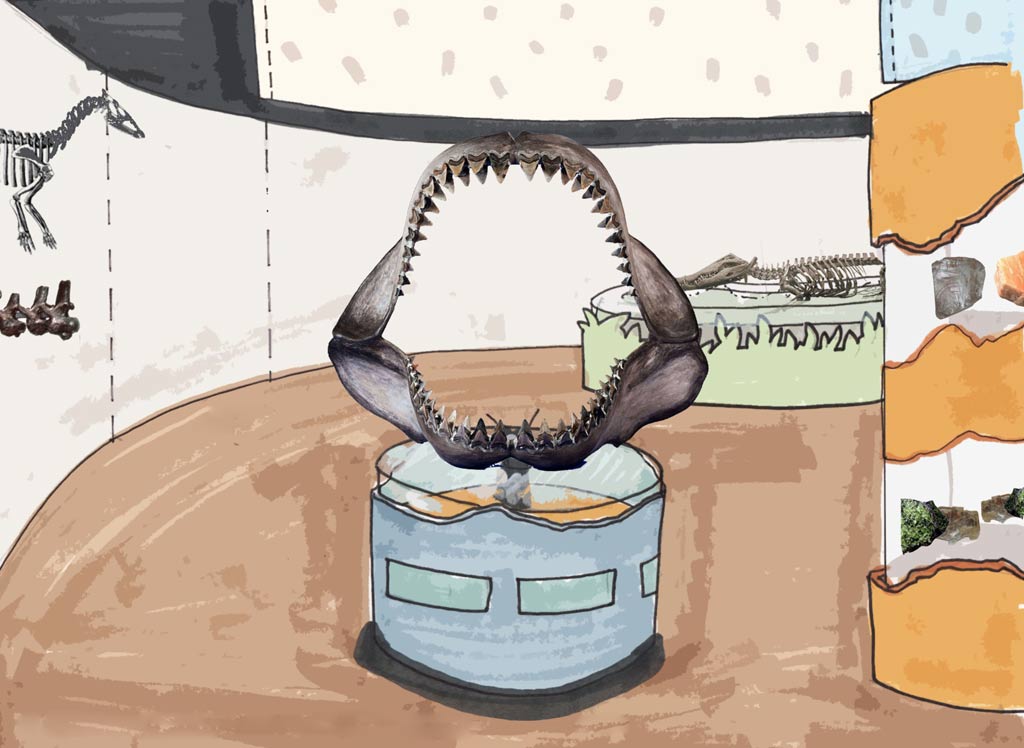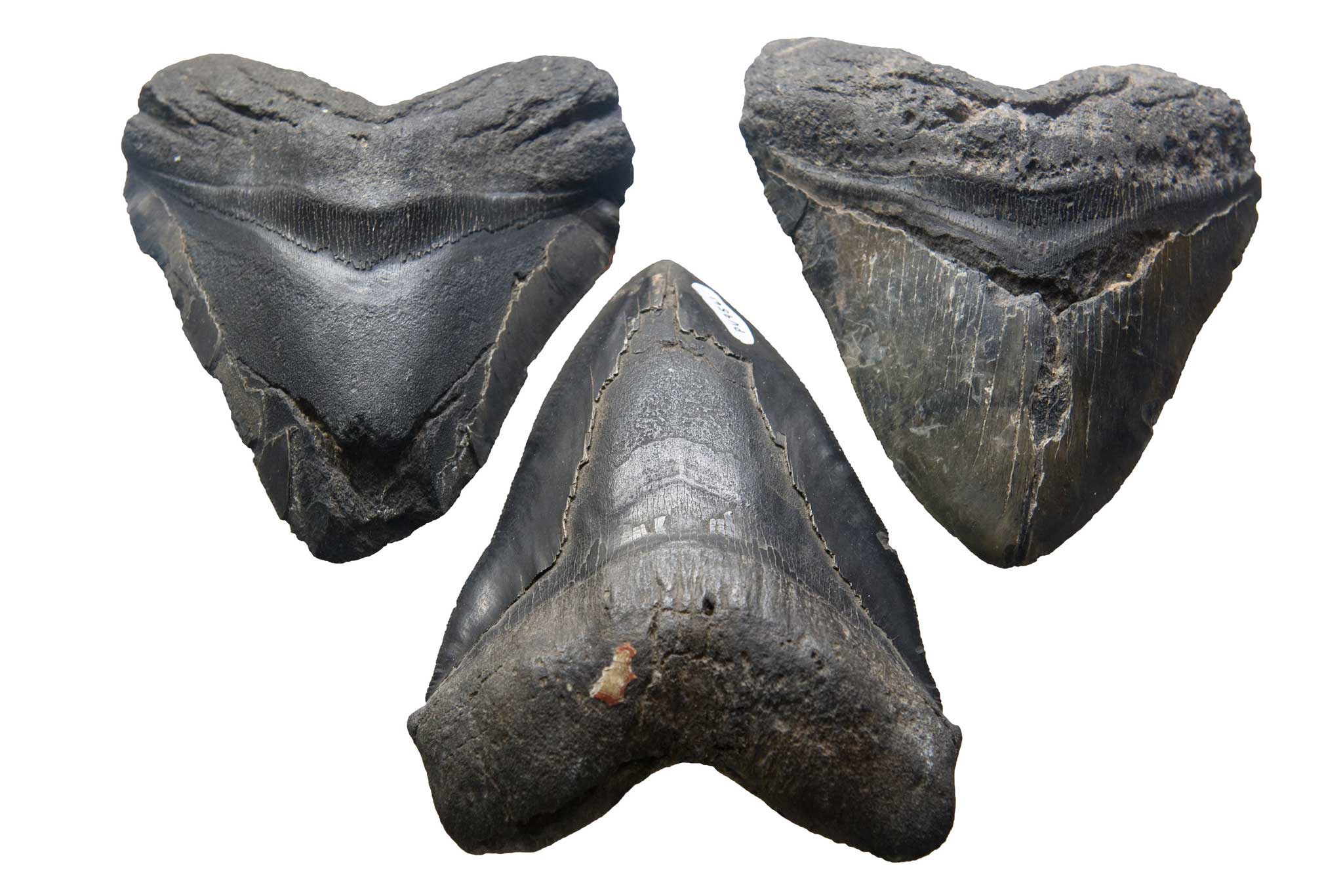Bringing them Back to Life: Megalodon and Sharks of the Lowcountry
Bringing Them Back to Life is a blog series from The Charleston Museum that provides updates and plans for our Natural History Gallery renovations.
The geologic history of the Lowcountry is tied to the Atlantic ocean. Just as the ocean has shaped the coast, it has shaped the lifestyles of the plants and animals that have lived here. As apex predators, sharks have always been important to the coastal habitats of South Carolina. Sharks commonly target weaker or sick fish, which removes these weak links from the food chain. By doing so, they ensure the population of fish as a whole is healthier. As sharks have always been an important part of the Lowcountry food chain, it is important that they are allowed to maintain their role for the good of the environment.
Of the shark fossils collected in the Lowcountry, the most famous are the teeth of the giant shark Carcharodon (Carcharocles) megalodon. Megalodon most likely fed on whales, large fish, sea turtles, and other smaller sharks. Traditionally, megalodon sharks are thought to be related to great whites and mako sharks in the genus Carcharodon. However, this is still a matter of debate. It is possible that these mega-toothed sharks may be different enough to warrant their own separate genus, Carcharocles. An exciting section of the new Natural History Gallery will showcase a cast of the jaws and teeth of megalodon as well as actual fossils of various sharks found in the Lowcountry. This will allow visitors to fully appreciate the size variations in each species’ tooth size, view a timeline of their evolution and learn more about the importance of these powerful creatures.



